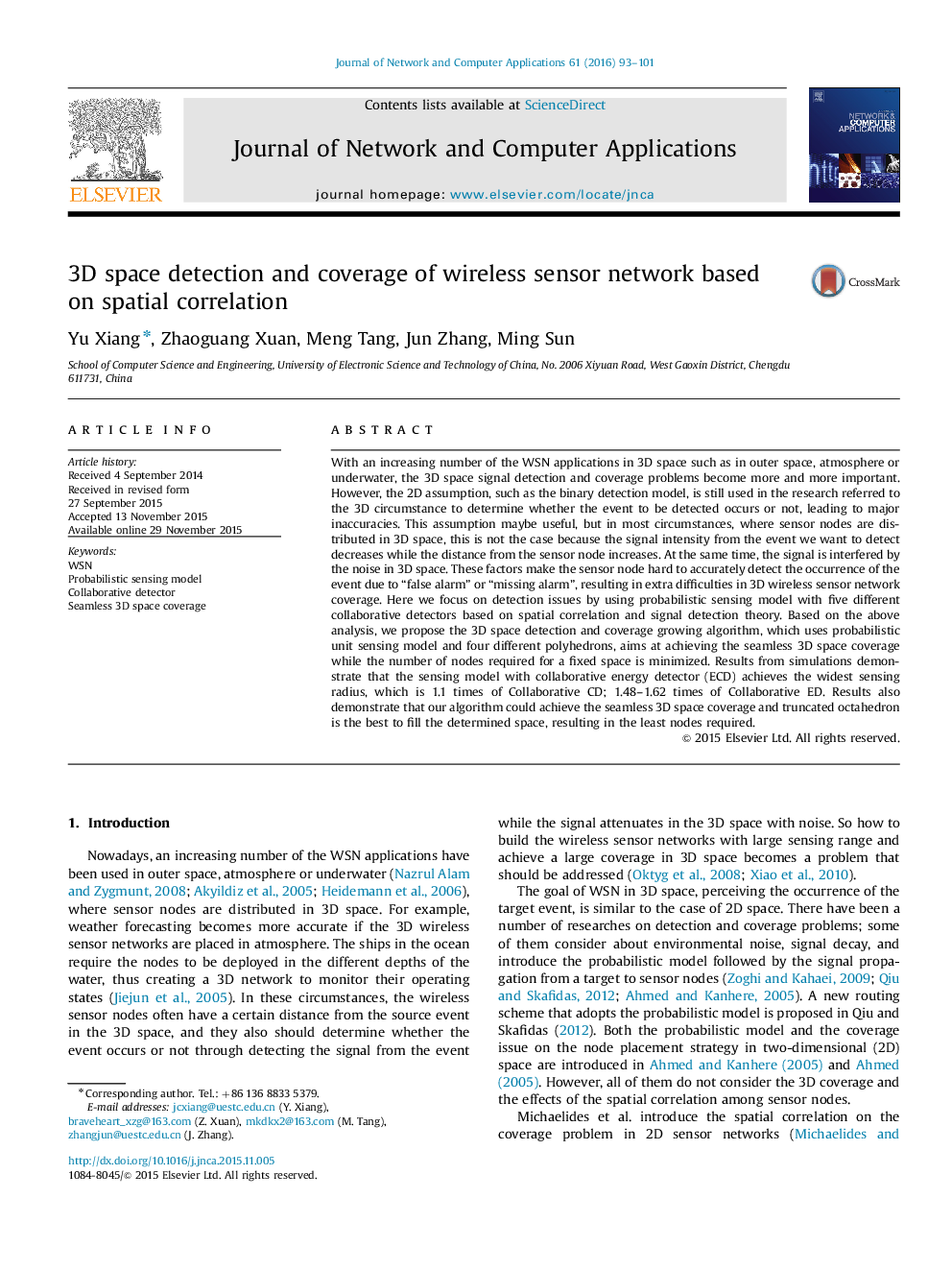ترجمه فارسی عنوان مقاله
پوشش و تشخیص فضای 3D شبکه حسگر بی سیم مبتنی بر همبستگی مکانی
عنوان انگلیسی
3D space detection and coverage of wireless sensor network based on spatial correlation
| کد مقاله | سال انتشار | تعداد صفحات مقاله انگلیسی |
|---|---|---|
| 67558 | 2016 | 9 صفحه PDF |
منبع

Publisher : Elsevier - Science Direct (الزویر - ساینس دایرکت)
Journal : Journal of Network and Computer Applications, Volume 61, February 2016, Pages 93–101
ترجمه کلمات کلیدی
WSN؛ مدل سنجش از احتمالاتی؛ آشکارساز مشترک؛ پوشش فضای 3D بدون درز
کلمات کلیدی انگلیسی
WSN; Probabilistic sensing model; Collaborative detector; Seamless 3D space coverage

